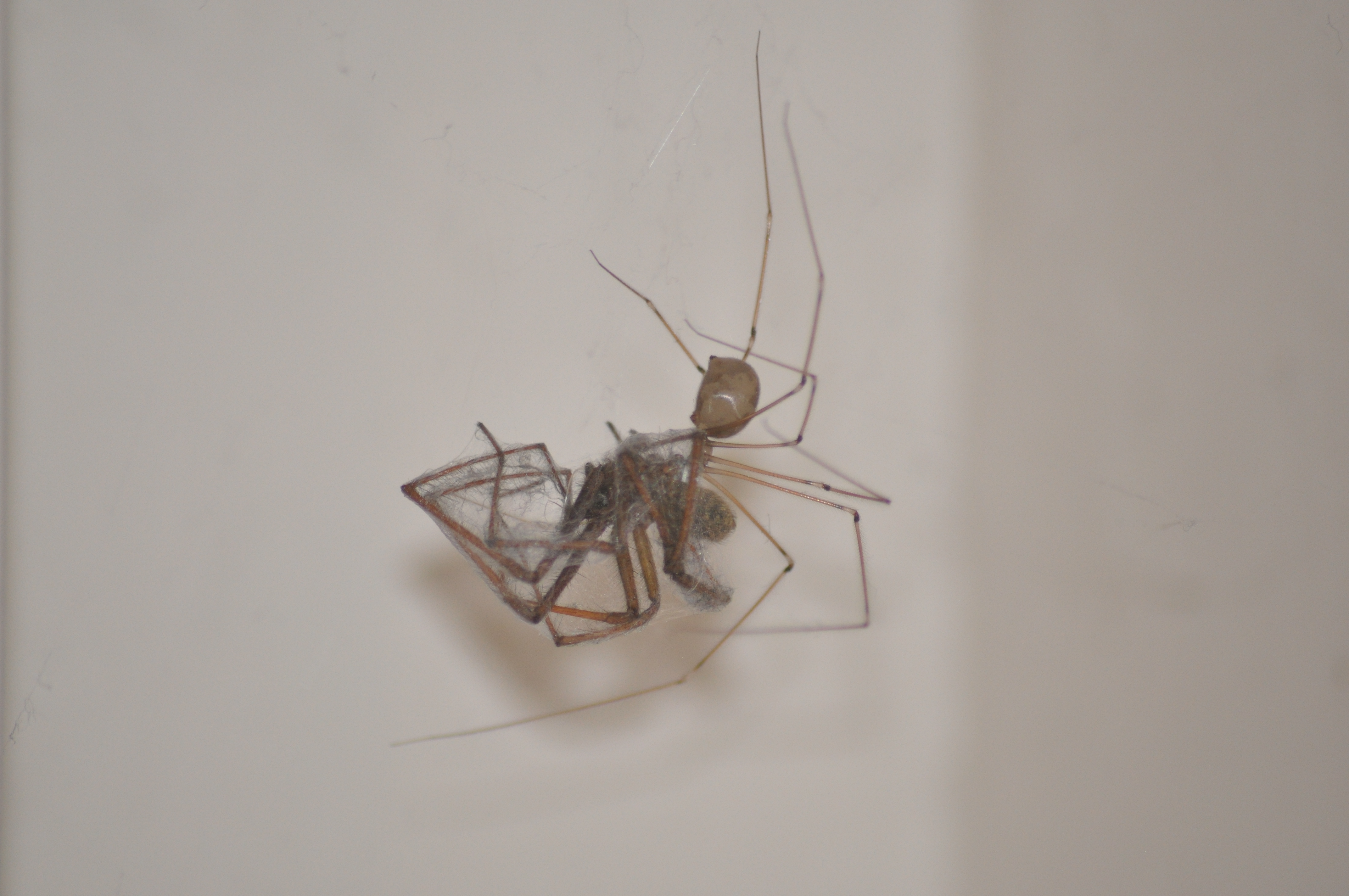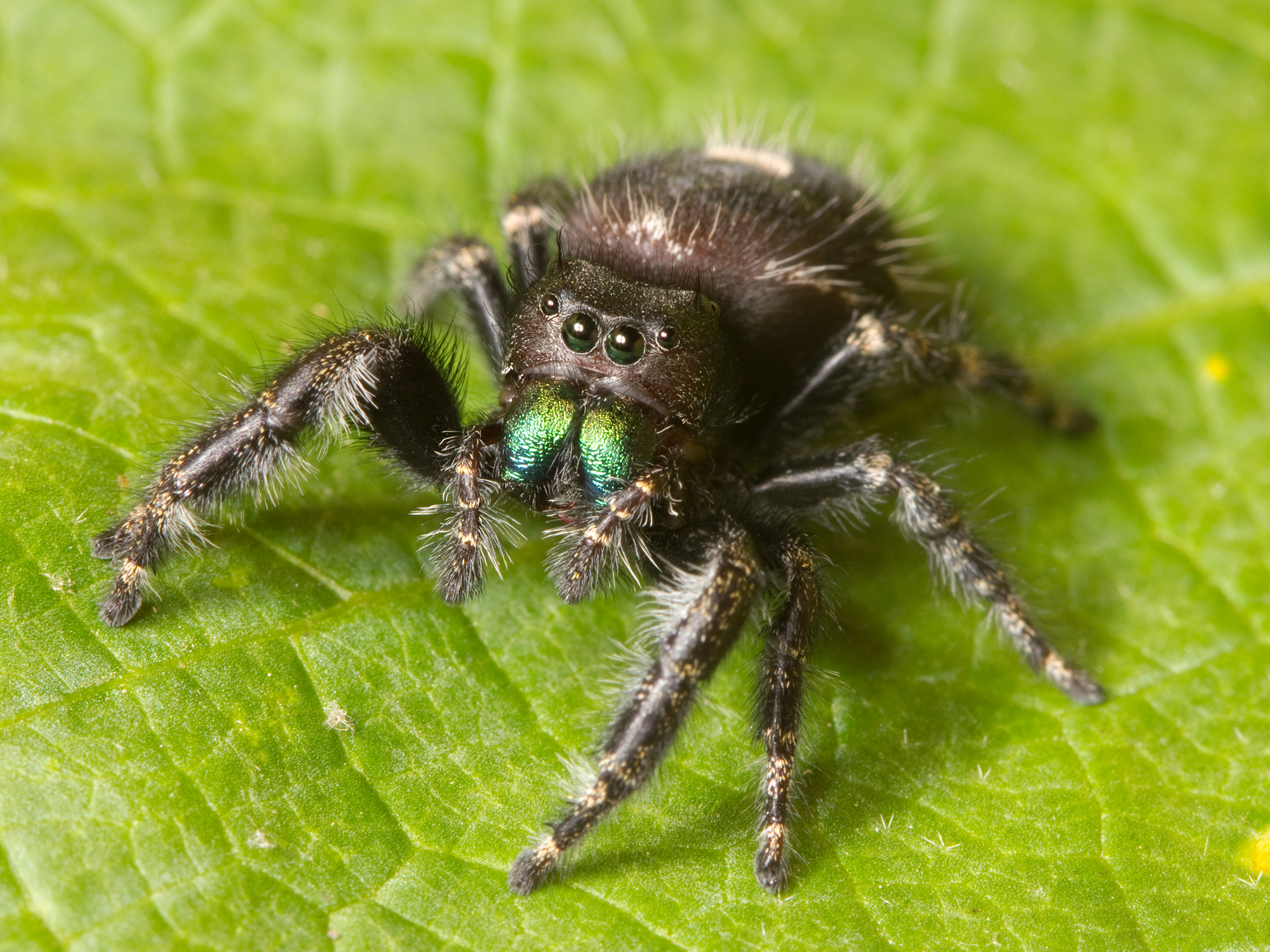|
Muruta
''Muruta'' is a small genus of southeast Asian cellar spiders named after the Murut people. It was erected in 2018 for two species transferred from ''Pholcus'' after a molecular phylogenetic study of Pholcidae. They are average size for cellar spiders with relatively long legs, the first legs averaging long. Males can be distinguished from other species by hairless, flat sclerites on their chelicerae, and females can be distinguished by three-layered telescopic tubes in their genital structure. it contains only two species, both native to northern Borneo: '' M. bario'' and '' M. tambunan''. See also * ''Pholcus'' * List of Pholcidae species This page lists all described genera and species A species () is often defined as the largest group of organisms in which any two individuals of the appropriate sexes or mating types can produce fertile offspring, typically by sexual reprod ... References Pholcidae genera Arthropods of Borneo {{Pholcidae-stub ... [...More Info...] [...Related Items...] OR: [Wikipedia] [Google] [Baidu] |
List Of Pholcidae Species
This page lists all described genera and species A species () is often defined as the largest group of organisms in which any two individuals of the appropriate sexes or mating types can produce fertile offspring, typically by sexual reproduction. It is the basic unit of Taxonomy (biology), ... of the spider family Pholcidae. , the World Spider Catalog accepts 1820 species in 94 genera: A ''Aetana'' '' Aetana'' Huber, 2005 * '' Aetana abadae'' Huber, 2015 — Philippines * '' Aetana baganihan'' Huber, 2015 — Philippines * '' Aetana banahaw'' Huber, 2015 — Philippines * '' Aetana fiji'' Huber, 2005 — Fiji * '' Aetana gaya'' Huber, 2015 — Malaysia (Gaya Is.) * '' Aetana indah'' Huber, 2015 — Borneo * '' Aetana kinabalu'' Huber, 2005 — Borneo * '' Aetana kiukoki'' Huber, 2015 — Philippines * '' Aetana lambir'' Huber, 2015 — Borneo * '' Aetana libjo'' Huber, 2015 — Philippines * '' Aetana loboc'' Huber, 2015 — Philippines * '' Aetana lozadae'' Huber, 2015 ... [...More Info...] [...Related Items...] OR: [Wikipedia] [Google] [Baidu] |
Pholcidae
The Pholcidae are a Family (biology), family of Araneomorphae, araneomorph spiders. The family contains more than 1,800 individual species of pholcids, including those commonly known as cellar spider, daddy long-legs spider, carpenter spider, daddy long-legger, vibrating spider, gyrating spider, long daddy, and angel spider. The family, first described by Carl Ludwig Koch in 1850, is divided into 94 genera. The common name "daddy long-legs" is used for several species, especially ''Pholcus phalangioides'', but is also the common name for several other arthropod groups, including Opiliones, harvestmen and Tipuloidea, crane flies. Appearance Pholcids have extremely long and thin legs with flexible Spider anatomy#Appendages, tarsi. They can be distinguished from other long-legged spiders by the eye arrangement: Pholcidae have two groups of three eyes each, and there may be a pair of small eyes in between them. Most have this middle pair present for a total of eight eyes, ... [...More Info...] [...Related Items...] OR: [Wikipedia] [Google] [Baidu] |
Pholcidae Genera
The Pholcidae are a family of araneomorph spiders. The family contains more than 1,800 individual species of pholcids, including those commonly known as cellar spider, daddy long-legs spider, carpenter spider, daddy long-legger, vibrating spider, gyrating spider, long daddy, and angel spider. The family, first described by Carl Ludwig Koch in 1850, is divided into 94 genera. The common name "daddy long-legs" is used for several species, especially ''Pholcus phalangioides'', but is also the common name for several other arthropod groups, including harvestmen and crane flies. Appearance Pholcids have extremely long and thin legs with flexible tarsi. They can be distinguished from other long-legged spiders by the eye arrangement: Pholcidae have two groups of three eyes each, and there may be a pair of small eyes in between them. Most have this middle pair present for a total of eight eyes, but some genera (e.g. ''Modisimus'', ''Spermophora'', ''Spermophorides'') lack th ... [...More Info...] [...Related Items...] OR: [Wikipedia] [Google] [Baidu] |
Genus
Genus (; : genera ) is a taxonomic rank above species and below family (taxonomy), family as used in the biological classification of extant taxon, living and fossil organisms as well as Virus classification#ICTV classification, viruses. In binomial nomenclature, the genus name forms the first part of the binomial species name for each species within the genus. :E.g. ''Panthera leo'' (lion) and ''Panthera onca'' (jaguar) are two species within the genus ''Panthera''. ''Panthera'' is a genus within the family Felidae. The composition of a genus is determined by taxonomy (biology), taxonomists. The standards for genus classification are not strictly codified, so different authorities often produce different classifications for genera. There are some general practices used, however, including the idea that a newly defined genus should fulfill these three criteria to be descriptively useful: # monophyly – all descendants of an ancestral taxon are grouped together (i.e. Phylogeneti ... [...More Info...] [...Related Items...] OR: [Wikipedia] [Google] [Baidu] |
Murut People
The Murut, alternatively referred to as Tagol/Tahol, constitute an indigenous ethnic community comprising 29 distinct sub-ethnic groups dwelling within the northern inland territories of Borneo. Characterized by their rich cultural diversity, the Murutic languages form a linguistic family encompassing approximately half a dozen closely intertwined Austronesian languages. Murut populations exhibit dispersion in Malaysia's Sabah and the northern part of Sarawak, as well as in the country of Brunei and the Indonesian North Kalimantan Province. Furthermore, the Murut people have close connections with the Tidung people, Tidung, who historically inhabited Borneo's east coast region that underwent processes of Islamization and Malayalization, Etymology The literal translation of ''murut'' is "hill people". Demographics A large percentage of the Murut communities are in the southwest interior of Sabah, East Malaysia, specifically the districts of Keningau, Tenom, Nabawan, Labua ... [...More Info...] [...Related Items...] OR: [Wikipedia] [Google] [Baidu] |
Pholcus
''Pholcus'' is a genus of spiders of long-bodied cellar spider and allies in the family Pholcidae, with 375 described species as of January 2023. It includes the cellar spider '' P. phalangioides'', often called the "daddy longlegs". This may cause confusion because the name "daddy longlegs" is also applied to two other unrelated arthropods: the harvestman and the crane fly. Description ''Pholcus'', like Pholcidae in general, have extremely long and thin legs. The genus can be distinguished from other pholcid genera by its large size (body length >4 mm), eight eyes, evenly domed prosoma (lacking a median furrow or pit) and cylindrical opisthosoma (longer than it is high). Habitat In the wild, ''Pholcus'' live in environments such as caves, under rocks, forest shrubs and deep limestone cracks. Synanthropic species such as ''P. phalangioides'' live in and around buildings and other disturbed habitats. Species * '' Pholcus abstrusus'' Yao & Li, 2012 — China * '' Pholcu ... [...More Info...] [...Related Items...] OR: [Wikipedia] [Google] [Baidu] |
Molecular Phylogenetics
Molecular phylogenetics () is the branch of phylogeny that analyzes genetic, hereditary molecular differences, predominantly in DNA sequences, to gain information on an organism's evolutionary relationships. From these analyses, it is possible to determine the processes by which diversity among species has been achieved. The result of a molecular phylogenetics, phylogenetic analysis is expressed in a phylogenetic tree. Molecular phylogenetics is one aspect of molecular systematics, a broader term that also includes the use of molecular data in Taxonomy (biology), taxonomy and biogeography. Molecular phylogenetics and molecular evolution correlate. Molecular evolution is the process of selective changes (mutations) at a molecular level (genes, proteins, etc.) throughout various branches in the tree of life (evolution). Molecular phylogenetics makes inferences of the evolutionary relationships that arise due to molecular evolution and results in the construction of a phylogenetic tre ... [...More Info...] [...Related Items...] OR: [Wikipedia] [Google] [Baidu] |
Sclerite
A sclerite (Greek language, Greek , ', meaning "hardness, hard") is a hardened body part. In various branches of biology the term is applied to various structures, but not as a rule to vertebrate anatomical features such as bones and teeth. Instead it refers most commonly to the hardened parts of arthropod exoskeletons and the internal wikt:spicule, spicules of invertebrates such as certain sponges and Alcyonacea, soft corals. In paleontology, a scleritome is the complete set of sclerites of an organism, often all that is known from fossil invertebrates. Sclerites in combination Sclerites may occur practically isolated in an organism, such as the Stinger, sting of a Conus, cone shell. Also, they can be more or less scattered, such as tufts of defensive sharp, mineralised bristles as in many marine polychaetes. Or, they can occur as structured, but unconnected or loosely connected arrays, such as the mineral "teeth" in the radula of many Mollusca, the Valve (mollusc), valves of chit ... [...More Info...] [...Related Items...] OR: [Wikipedia] [Google] [Baidu] |
Chelicerae
The chelicerae () are the arthropod mouthparts, mouthparts of the subphylum Chelicerata, an arthropod group that includes arachnids, horseshoe crabs, and sea spiders. Commonly referred to as "jaws", chelicerae may be shaped as either articulated fangs, or as a type of pincer_(biology), pincers. Some chelicerae, such as those found on nearly all spiders, are hollow and contain (or are connected to) venom glands, used to inject venom into prey or a perceived threat. Both pseudoscorpions and Opiliones , harvestmen have additional structures on their chelicerae that are used for grooming (papillae in pseudoscorpions, cheliceral teeth in Opiliones). In ''Paratrechalea'', males and females have shown to have a chelicerae dimorphism, because the chelicerae is used as a mating signal for females. Types Chelicerae can be divided into three kinds: jackknife chelicerae, scissor chelicerae, and three-segmented wikt:chelate, chelate chelicerae. Jackknife chelicerae The jackknife chelicer ... [...More Info...] [...Related Items...] OR: [Wikipedia] [Google] [Baidu] |
Borneo
Borneo () is the List of islands by area, third-largest island in the world, with an area of , and population of 23,053,723 (2020 national censuses). Situated at the geographic centre of Maritime Southeast Asia, it is one of the Greater Sunda Islands, located north of Java Island, Java, west of Sulawesi, and east of Sumatra. The island is crossed by the equator, which divides it roughly in half. The list of divided islands, island is politically divided among three states. The sovereign state of Brunei in the north makes up 1% of the territory. Approximately 73% of Borneo is Indonesian territory, and in the north, the East Malaysian states of Sabah and Sarawak make up about 26% of the island. The Malaysian federal territory of Labuan is situated on a small island just off the coast of Borneo. Etymology When the sixteenth-century Portuguese explorer Jorge de Menezes made contact with the indigenous people of Borneo, they referred to their island as ''Pulu K'lemantang'', which ... [...More Info...] [...Related Items...] OR: [Wikipedia] [Google] [Baidu] |





